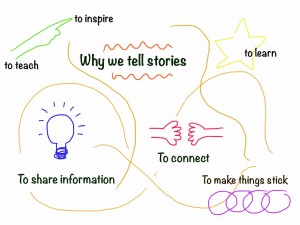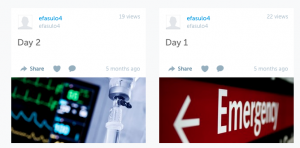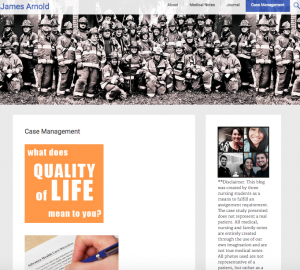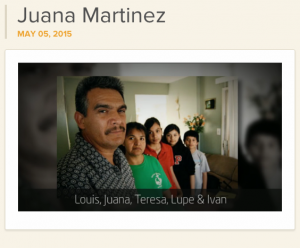Looking for approaches for to improve student engagement? Want to integrate digital tools and technology into assignments? Need to bring a project to life? Spice up your end of semester projects with Digital Storytelling!
 Why digital storytelling?
Why digital storytelling?
- Digital Storytelling tells a story in a powerful way by connecting ideas, narratives, and emotion through the use of digital tools. These stories may evoke feelings, convey a message, describe experiences, or express a point of view.
- Although digital storytelling was originally made popular in communications and creative writing courses in higher education, it has potential across diverse fields of study (Levine and Alexander, 2008; McLellan, 2006).
- Digital storytelling engages students through the use of technology, offers multiple modes of learning (e.g. visual and auditory), connects the use of technology to institutional learning, and facilitates an alternative method for student assessment (Chisholm and Trent, 2013; France and Wakefield, 2011).
How I transformed a dull project with digital storytelling:
Last spring, in one of my Nursing classes, I was dreading the usual PowerPoint group presentations that I assign about system-based content and disease processes. Students generally presented the traditional project during class with one or two slides dedicated to a “case study” patient example. Over time, I had grown concerned about how effectively this project was supporting my students’ learning and the significant amount of class time the presentations consumed. Often the case study presented by the students was nothing more than an example from the text, or a modified example from another resource.
By integrating digital story telling into this existing assignment, my students’ dull projects came to life. Students began creating and cultivating knowledge rather than consuming the information. To facilitate the project, I randomly divided my students into small groups of 3-4 and assigned each group one general physiological system topic.
The digital storytelling assignment was comprised of the following two parts:
- VoiceThread Creation: Students were required to create a VoiceThread focused on the disease process their patient would present with. The idea was that nursing students would need to start thinking about the project early in the semester and have the knowledge and preparatory information necessary for adequate care of the patient. This first portion of the assignment offered a method of both students’ content delivery and their PowerPoint presentation, which was uploaded into VoiceThread. The students were also required to include 10 review questions in the VoiceThread and, as a result, many students utilized this student-developed content to assist them with reviewing for our exam.
- The Story: Students were required to tell a comprehensive “case study” of a patient using any medium or digital tool of their choice. The last day of class was reserved for in-class presentations of the final digital story. I presented suggestions for tools students could use, which included: VoiceThread, CI Keys (for creating a website), Google Slides, PowerPoint, Storyfi, and Animoto. Ultimately the student groups could select any tool they felt comfortable using. Students were empowered by having control over the creativity of the project and selecting the content delivery of choice. The guidelines were unrestrained, only requesting students to present a patient with a disease process within the topic selected, including a case management issue. The students were encouraged to reflect on their prior clinical experience with patients and consider how complex a patient’s “story” can be.
The results
The depth and creativity of the students’ projects amazed me.
In creating these patients, students had to consider disease process, clinical presentation, associated lab values, and appropriate interventions and medications. The transition from flat lifeless presentations to digital storytelling was like going from black and white TV to color. The student engagement and effort with this project was so much more than a shallow review of the content in text.
Imagine your next assignment or project. Ask students to step into the content, engage them in the experience, excite them with the integration of digital tools, and achieve deeper learning. Digital storytelling may be a solution to enliven your student projects.



